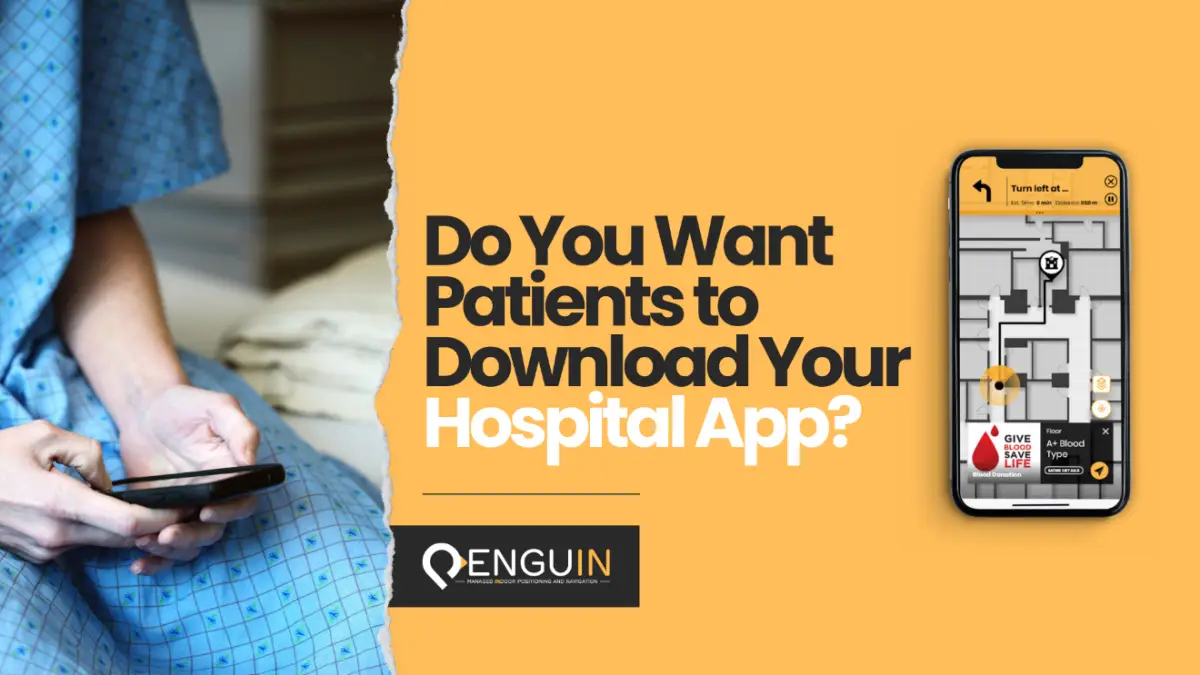Healthcare institutions are increasingly leveraging technology to enhance patient experiences and streamline medical services. One powerful tool in this pursuit is a hospital mobile app. That’s why two-thirds of the largest US hospitals offer mobile health apps [1].
These apps hold potential benefits for patients and staff. Yet, creating a successful app is just the start. To maximize its gains, you must prioritize adoption. This article details strategies to boost your hospital apps work and uptake. Furthermore, we’ll explore how PenguinIN enhances app services, addresses concerns, and integrates seamlessly to elevate app adoption.
Building the Hospital Mobile App – Things To Keep In Mind When Developing
Understanding User Needs and Pain Points
Your primary goal should be focused on enhancing the patient experience and patient care, making it more convenient for them and their family members to consume data and manage their health concerns. Step into the shoes of a patient within your hospital. Consider what might be lacking in the current setup. How can processes be simplified and made more accessible? Are there services that would significantly benefit patients and should not be overlooked?
This perspective should also extend to healthcare personnel. Given the demanding nature of their work, it’s important to find ways to collaborate with them in order to optimize their daily tasks. How can you work together to create smoother operations?
Crafting a User-Centric Hospital Tracking App
A user-friendly interface and intuitive navigation are key components of an app that users will embrace. Aim to create an app that not only provides value but also makes interactions effortless and enjoyable. Make sure that the app’s design aligns with the diverse user demographics it aims to serve.
Prioritizing Security and Privacy
Highlighting the utmost significance of Security and Privacy in the context of hospital apps cannot be overstated. It’s crucial to convey and assure users that their data is safeguarded and kept entirely confidential. Place special focus on collaborating with well-versed cloud service providers and upholding a centralized, fully controlled database to thwart any potential data breaches.
Incorporating Value-Added Features
Now that we looked at what you should consider when building the hospital tracking app, let’s talk about features.
Hospital apps can include an array of services, which in time can be updated and added to adapt to constant needs. Think of COVID, a sudden epidemic that made hospitals a hazardous environment with most cases spreading in healthcare facilities and quarantine zones. At such times, hospital mobile apps emerged as an essential part for infection control and contact tracing.
Let us look at some added value features that can lure your patients to download the hospital tracking app, focusing on what we know best at penguinIN having witnessed the result of our features firsthand with our clients.
Patient-Centric Medical Records: The hospital app becomes a personalized portal, granting patients access to their health records, test results, and medication reminders. This transparency strengthens patient’s relationship with your hospital, elevating their level of engagement and commitment to their treatment plans.
Appointment Management: By allowing patients to effortlessly schedule, reschedule, or cancel appointments from data provided in real time, hospital mobile apps allow healthcare providers to have streamlined operations and reduced no-show rates. Patients are drawn to the convenience and empowerment the app grants them in managing their health information and needs.
Telemedicine: People value the feeling of empowerment, especially when dealing with illness. Telemedicine has the potential to streamline processes for patients, engaging them more profoundly in their healthcare journey. This thoughtful approach can bring significant results and help build a loyal customer base.
Hospital apps open doors to the realm of telemedicine, enabling patients to access virtual consultations and video visits with healthcare professionals. This allows practitioners to prescribe medications and treat patients without the need of a physical visit. This digital frontier democratizes healthcare access and proves necessary, especially during unexpected challenges.
Indoor Navigation for Patients: Picture this scenario: a patient enters the vast, convoluted halls of a hospital, clutching their appointment details with a slight feeling of anxiety. How can you ensure they have a seamless journey from the entrance to their designated destination? Enter Real-Time Patient Wayfinding, an integral feature embedded within hospital tracking apps.
By simply entering their username and password, patients gain access to precise, step-by-step directions to their appointments and various hospital departments.
Indoor Navigation Empowering Accessibility Where It Matters Most: Hospital mobile apps empower patients, especially those with mobility challenges, by providing step-by-step directions to their destinations. Think of it as an advanced practice provider app, where users are offered live updates and accessible routes, individuals can navigate the hospital confidently, reducing anxiety and saving time.
| Learn More: Click Here
Real-Time Location Systems (RTLS) in Hospital Tracking Apps: When it comes to boosting efficiency and ensuring patient safety in hospital tracking apps, Real-Time Location Systems (RTLS) take the lead. Utilizing an intricate network of advanced sensors, intelligent tags, and cutting-edge communication technologies, RTLS enables unparalleled real-time tracking within healthcare facilities – encompassing medical equipment, staff, and even patients.
Hospital apps equipped with RTLS functionalities facilitate precise resource allocation and utilization, leading to optimized operations and, most importantly, improved patient safety and satisfaction. In dire situations, such as emergencies or Code Blue scenarios, RTLS prepares healthcare professionals and supports patients with instantaneous information on nearest available personnel and proper emergency procedures. The outcome is a timely response that can spell the difference in outcome in challenging scenarios.

How to Market Your Hospital App Successfully
Having comprehensively addressed the fundamental aspects of constructing a hospital app and incorporated distinctive features that set your platform apart and cater to critical healthcare aspects, let’s delve into methods to ensure your app gains traction. Additionally, we will introduce you to some of the techniques employed by PenguinIN to encourage patient downloads of hospital apps.
Feature Branding: Feature branding involves emphasizing and promoting distinct features or functionalities of a product or service as integral components of its brand identity. Let your partners serve as your advocates. PenguinIN ensures effective marketing of the added services, with a focus on a particular feature having the potential to enhance the app’s appeal to patients. This ensures the spotlight is on specific features that can attract a larger user base.
Wi-Fi Landing Page: By utilizing Wi-Fi landing pages strategically, you can encourage users connecting to the christ hospital health network to download the app. These pages can feature a compelling call to action, highlight the app’s benefits, and offer incentives for immediate download. This direct approach takes advantage of users’ connection to increase app downloads effectively.
QR Codes: Leveraging QR codes can boost hospital app downloads by providing instant access. Users can scan the QR code, directing them straight to the app download page. This seamless process capitalizes on their immediate interest and simplifies the download experience, enhancing app adoption.
Leverage User Reviews and Ratings: Monitor and respond to reviews, addressing any concerns or issues promptly. Additionally, consider showcasing some of the most positive reviews on various promotional channels to build confidence among potential users.
Staff Education: Incorporate staff education and advocacy into your app promotion strategy. These apps can prove to be very useful for training nurse practitioners NP and physician assistants PA who are new to the facility. Train hospital staff, including doctors, nurses, and administrative personnel, to become advocates for the app. Staff can play an important role in promoting the app during patient interactions.
Traditional Print Promotion: Cards and flyers effectively drive hospital app downloads. Placed in waiting areas and across the hospital, they directly engage patients and visitors. With clear calls to action, app benefits, and QR codes for swift access, this tangible approach enhances visibility and spurs app adoption.
At PenguinIN, we employ these methods to market our clients’ hospital mobile apps. Beyond just providing features, we believe our apps and services can provide training grounds for crucial staff members like certified registered nurse anesthetists CRNA and certified nurse midwives CNM to help them enhance patient experience. These shared objectives become a cornerstone when you choose to collaborate with us.
Learn more about what PenguinIN offers for healthcare and how we can partner with you to elevate your hospital application
Source:








